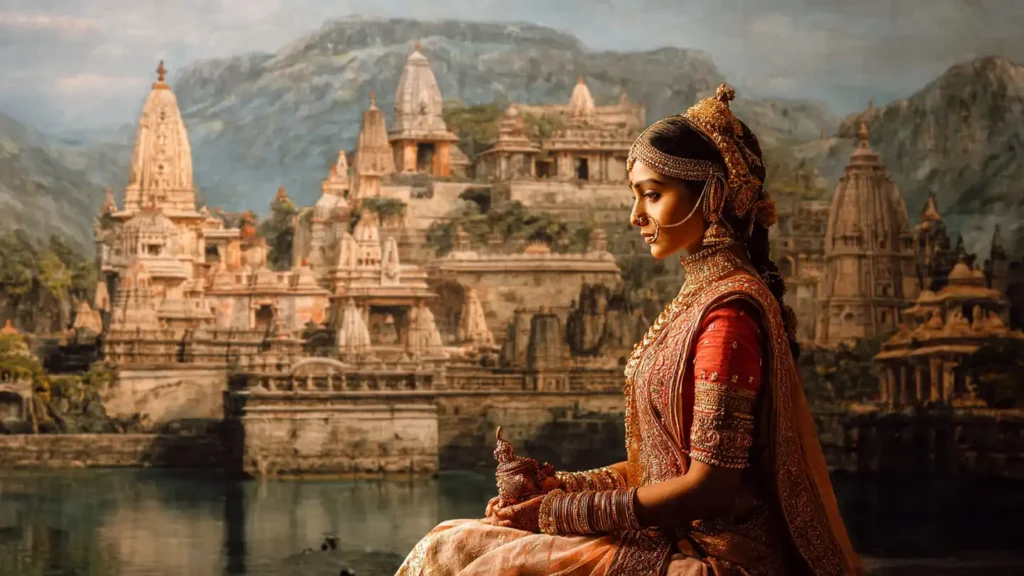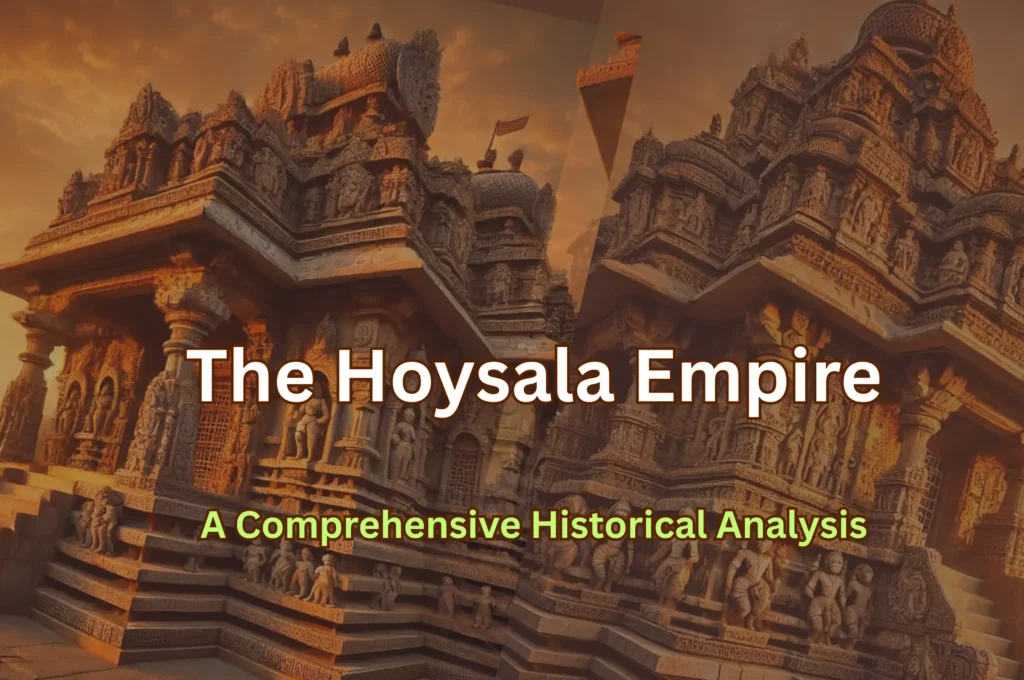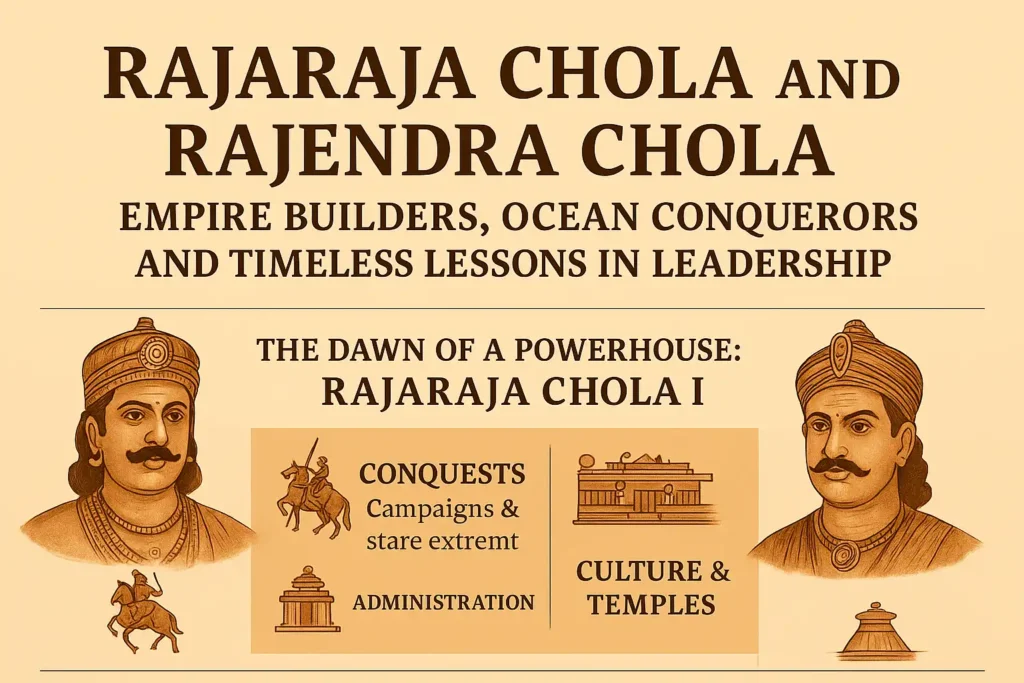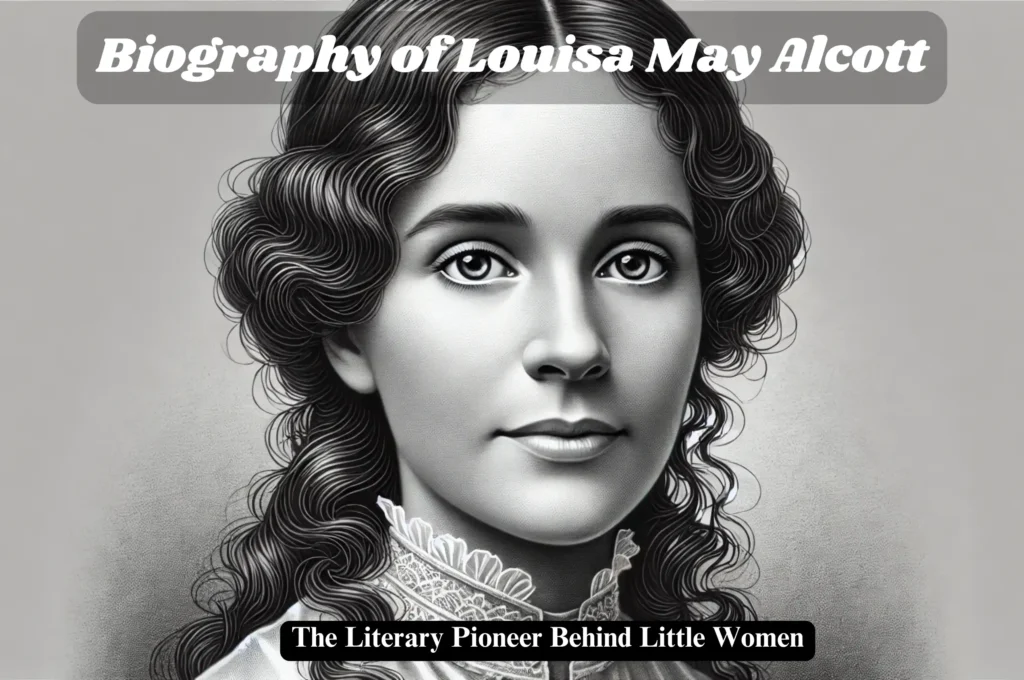In the annals of Indian history, few names shine with the luminous brilliance of Ahilyabai Holkar (1725–1795). Known as the “Philosopher Queen” of Malwa, she stands as a towering figure of enlightened governance, visionary leadership, and spiritual devotion—a woman who transformed the trajectory of an empire and, in doing so, restored the sacred landscape of India when it seemed all was lost.
Her reign was not marked by conquest driven by ambition, but by a singular vision: to serve her people with unwavering justice, to preserve Hindu dharma through the reconstruction of desecrated temples, and to prove that a woman could rule with wisdom, valor, and compassion that rivaled any monarch in India’s storied past.
Explore Category: Significant Women of India
Ahilyabai Holkar: The Philosopher Queen Who Restored Bharat’s Soul

From Humble Beginnings to Divine Destiny ~ Ahilyabai Holkar
Ahilyabai’s story begins not in palatial halls but in the modest village of Chondi (Chaundi) in present-day Ahmednagar, Maharashtra. Born on May 31, 1725, to Mankoji Shinde, the village patil (chief), she emerged from humble Dhangar roots—a family of shepherds and agriculturalists. Yet, her father defied the conventions of his era by educating his daughter in an age when such privileges were unthinkable for women.
The legend of her destiny took form during a chance encounter. Malhar Rao Holkar, a powerful military commander under the Maratha Peshwa Baji Rao I and ruler of the Malwa territory, stopped in her village on his way to Pune. Witnessing the eight-year-old Ahilyabai performing rituals at the village temple, he was struck not merely by her physical presence but by her extraordinary piety and character. Impressed by this remarkable child, Malhar Rao arranged her marriage to his son, Khanderao Holkar. They were wed in 1733 when she was approximately eight years old.
Life in the Holkar household blessed her with two children: a son, Malerao (born 1745), and a daughter, Muktabai (born 1748). Yet fate had other plans.
Tragedy and Transformation: The Making of a Queen ~ Ahilyabai Holkar
The true crucible of Ahilyabai’s character came through successive tragedies that would have shattered ordinary souls. In 1754, her husband, Khanderao Holkar, was killed in the siege of Kumbher. According to the oppressive customs of her time, a widow was expected to commit sati—to immolate herself on her husband’s funeral pyre. But Malhar Rao Holkar, her father-in-law, recognized something extraordinary in this young widow and made a choice that would echo through the ages: he prevented her from performing sati.
Rather than permit her to disappear into death, Malhar Rao undertook her transformation. He trained her rigorously in statecraft, military affairs, administration, and the art of governance—disciplines typically reserved for men. Under his mentorship, Ahilyabai demonstrated brilliant aptitude, mastering the complexities of ruling a kingdom with such proficiency that her father-in-law came to rely upon her counsel.
In 1766, Malhar Rao Holkar passed away. A year later, her son, Malerao—who suffered from mental illness—also died. These cascading losses culminated in a pivotal moment: Ahilyabai petitioned the Maratha Peshwa, the supreme authority of the Confederacy, for permission to assume governance of Malwa.
The Peshwa granted her petition on December 11, 1767, and thus began her extraordinary reign.
The Reign of the Philosopher Queen: 1767–1795 ~ Ahilyabai Holkar
For 28 years, Ahilyabai governed Malwa with a wisdom and justice that earned her comparisons to history’s greatest female rulers—Catherine the Great of Russia, Queen Elizabeth I of England, and Margaret I of Denmark. Yet her achievements were distinctly her own, rooted in her unwavering commitment to dharma and the welfare of her subjects.
A Kingdom of Peace Amidst Chaos
At the time of Ahilyabai’s ascension, Central India was ablaze with conflict. The collapse of Mughal power had created a vacuum, with numerous powers vying for supremacy. Malwa, surrounded by turbulent neighbors and threatened by plundering dacoits and tribal raiders, was vulnerable.
Yet under her rule, something remarkable occurred: Malwa never once fell under attack. While the rest of Central India erupted in warfare and bloodshed, Malwa became an oasis of stability and prosperity. This was not achieved through isolationism but through shrewd statecraft and military preparedness.
Ahilyabai personally led armies into battle, mounted on elephants, armed with bows and arrows like a seasoned warrior. She appointed Tukoji Rao Holkar—a trusted military commander and her brother-in-law—as the head of her forces. Together, they protected the kingdom from invasions and raiding parties. Notably, in 1792, she hired the French military officer Chevalier Dudrenec to modernize her army by raising four battalions equipped with contemporary weaponry and tactics—a remarkably progressive decision for the era.
Justice Without Partiality: The Rule of Dharma
The soul of Ahilyabai’s governance lay in her administration of justice. She established courts for arbitration and dispute resolution, ensuring that every citizen—from the poorest farmer to the richest merchant—could petition for redress. Significantly, she did not observe the custom of purdah (seclusion of women), instead holding daily public audiences where anyone could approach her directly with their grievances.
Her most famous judicial act has become legendary in Indian history. When her own son was found guilty of a capital crime, Ahilyabai did not let maternal love sway her judgment. She sentenced him to death—to be crushed by an elephant. This act of impartial justice, though heartbreaking, demonstrated her unwavering commitment to the rule of law and dharma above all personal considerations.
Beyond resolving disputes, Ahilyabai reformed laws that perpetuated injustice. She abolished the traditional law that confiscated the property of childless widows, recognizing the inherent cruelty of such customs. In doing so, she provided security and dignity to thousands of vulnerable women.
Economic Prosperity and Cultural Renaissance
Ahilyabai transformed the capital into a thriving center of commerce, art, and learning. She relocated the seat of Holkar power from Indore to Maheshwar on the banks of the sacred Narmada River, establishing the magnificent Ahilya Fort in 1767. Her capital became not merely an administrative center but a flourishing hub of textile production, literature, music, sculpture, and arts.
She generously patronized scholars and artists, providing sustenance to the renowned Marathi poet Moropant, the Sanskrit scholar Khushali Ram, and the musical bard Anantaphandi. The textile industry she nurtured in Maheshwar remains famous to this day—the Maheshwari saree, with its distinctive silk-cotton blend and elegant design, stands as a living testament to her patronage of artisans.
Her economic policies were equally enlightened. She implemented fair taxation systems, promoted agriculture, trade, and commerce, and supported handicraft industries. These policies led to remarkable economic growth across her kingdom. Additionally, she established a postal system connecting Maheshwar to Pune—an innovative administrative achievement that facilitated communication and commerce.
Public Welfare: Building the Infrastructure of Compassion
One of Ahilyabai’s most enduring contributions was her investment in public welfare infrastructure. Throughout her realm, she commissioned the construction of:
- Wells and tanks for water supply to villages and communities
- Dharamshalas (rest houses) for travelers and pilgrims
- Roads and bridges connecting remote villages and enabling trade
- Ghats (riverbank structures) in pilgrimage centers for ritual bathing
- Feeding centers (annakshetras) along pilgrimage routes to provide meals to devotees
These structures weren’t merely utilitarian—they represented a vision of governance centered on the comfort and dignity of ordinary people. A ruler’s true measure, she seemed to believe, lay not in monuments to her own glory but in the safety, sustenance, and spiritual opportunity provided to her subjects.
The Builder of Temples: Restoring the Sacred Landscape ~ Ahilyabai Holkar
Yet it is Ahilyabai’s contributions to temple restoration that form her most glorious and enduring legacy. In an era when centuries of invasions—particularly under Mughal emperors who viewed Hindu temples as symbols of “pagan idolatry”—had left India’s sacred landscape in ruins, Ahilyabai undertook a mission of spiritual restoration that was both unprecedented in scale and transformative in impact.
The Kashi Vishwanath Temple: Ahilyabai Holkar Greatest Achievement
The crowning jewel of Ahilyabai’s legacy is the Kashi Vishwanath Temple in Varanasi. This most sacred of all Hindu temples—a Jyotirlinga (manifest form of Shiva) and the spiritual heart of Hinduism—had been demolished in 1669 by Mughal Emperor Aurangzeb, who ordered its destruction to replace it with what is now the Gyanvapi Mosque.
For over a century, this desecration remained. But Ahilyabai could not ignore the call. In 1776, she commissioned the reconstruction of the Kashi Vishwanath Temple at its present location, just south of the Gyanvapi Mosque. According to tradition, Ahilyabai dreamed that it was her sacred duty to restore Vishwanath to his former glory. She traveled to Varanasi, sought permission from the priestly families (Mahants) who held ancestral claims to the site, and gained their enthusiastic support.
The temple she built was designed with two garbha-grahas (inner sanctums) dedicated to Vishweshwar and Dandapani, architecturally consistent with descriptions in the sacred texts. After its completion, Ahilyabai had an inscription engraved in Sanskrit documenting her restoration work and acknowledging the support of the Mahant families—a gesture of humility that ensured her contribution would be remembered without self-aggrandizement.
The temple she built gradually became increasingly popular with pilgrims in the 1820s, establishing itself as the primary pilgrimage site in Varanasi. Later, the Sikh ruler Maharaja Ranjit Singh honored her legacy by plating the temple’s spire with 23 maunds (920 kilograms) of gold, creating the magnificent golden dome that crowns the temple today.
Even in modern times, Ahilyabai’s contribution remains recognized. When Prime Minister Narendra Modi inaugurated the Kashi Vishwanath Corridor Project in December 2021, he specifically honored Ahilyabai’s role, and a statue of the Maratha queen was installed at the temple premises, adorned with flowers in homage. The ghat in Varanasi has been named Ahilyabai Ghat in her honor.
A Continental Vision: Temples Across Bharat ~ Ahilyabai Holkar
Yet her temple work extended far beyond Varanasi. With remarkable ambition and resources, Ahilyabai sponsored the reconstruction and renovation of temples at virtually every major pilgrimage center in India, creating a network of restored sacred sites that united Hindu civilization across the subcontinent. Her patronage reached:
- Somnath Temple (Gujarat)—another Jyotirlinga devastated by invasion
- Trayambakeshwar Temple (Nashik)
- Rameshwaram Temple (Tamil Nadu)
- Omkareshwar Temple (Madhya Pradesh)
- Kedarnath and Badrinath in the Himalayas
- Ujjain, Mathura, Ayodhya, and Gaya—spiritual centers across the length and breadth of India
This was not merely philanthropy—it was a vision of cultural and spiritual unity. By restoring temples from the Himalayas to the tip of South India, from the Arabian Sea to the Bay of Bengal, Ahilyabai demonstrated that Hindu dharma transcended regional boundaries and that the sacred landscape belonged to all India.
Notably, she never inscribed her own name on any structure. This remarkable humility—performing these works not for personal glory or ego but purely out of devotion to dharma—sets her apart from most rulers. Her works spoke through their presence, not through self-commemorative inscriptions.
A Revolutionary Vision of Social Justice
Beyond the temples, Ahilyabai’s tenure marked a revolutionary approach to social issues, particularly regarding the status and rights of women and marginalized communities.
Protecting Widows and Reforming Laws
She transformed the plight of widows in her kingdom. By abolishing the law that confiscated the property of childless widows, she provided economic security and dignity to thousands of vulnerable women. This was a radical reform that challenged centuries of patriarchal custom.
Challenging Caste Hierarchies
Ahilyabai’s administration notably broke down caste barriers. She appointed women and individuals from lower castes to significant positions within her government, ensuring that governance reflected the diversity of her subjects. This inclusion was revolutionary for an 18th-century kingdom where caste hierarchies were rigidly enforced.
Inclusive Governance
She ensured that marginalized groups, including tribal communities and the economically disadvantaged, could access justice and participate in civic life. Her daily public audiences were open to all—regardless of caste, gender, or social standing.
Personal Virtue and Spiritual Devotion
Ahilyabai’s governance was inseparable from her profound spiritual devotion. According to accounts, she would hold a Shivling (a stone representing Shiva) in her hand while making judicial and administrative decisions, constantly invoking the blessings of Mahadev. All her royal proclamations bore the inscription “Shri Shankara” (another name for Shiva) alongside her signature, indicating that she saw herself as acting in service to the divine rather than wielding power for herself.
She never permitted personal ambition to cloud her judgment. When challenged to perform sati after her husband’s death, she chose life and duty. When faced with enemies threatening her kingdom, she rode to battle with courage. When called to judge her own son, she chose justice over maternal affection. When building temples, she chose anonymity over self-commemoration.
Legacy and Remembrance
Ahilyabai’s reign ended on August 13, 1795, when she passed away at age 70 in Indore. She was succeeded by her grandson Tukojirao Holkar I, who inherited a stable, prosperous, and well-administered kingdom—a testament to her effective governance.
Titles and Honors by Ahilyabai Holkar
During her lifetime and beyond, she was known by several honorific titles that encapsulate her significance:
- “Punyashlok Ahilyadevi” (“One as Pure as Sacred Chants”)—a title acknowledging her spiritual purity
- “The Philosopher Queen”—reflecting her visionary leadership
- “Dharmarakshika” (“Preserver of Dharma”)—honoring her role in safeguarding Hindu religious tradition
Modern Recognition
India officially recognized her contributions by issuing a commemorative stamp in her honor in 1996. Educational institutions, parks, and cultural organizations bear her name. Most significantly, the temple restorations she sponsored continue to serve as pilgrimage destinations for millions of Hindus annually, their sacred spaces a living testament to her vision and sacrifice.
The Enduring Lesson: Leadership Beyond Gender
In a world where leadership was conceived as the exclusive domain of men, where women were told to be passive, obedient, and invisible, Ahilyabai Holkar shattered every convention. She did not demand equality—she demonstrated it through action. She did not ask for respect—she commanded it through wisdom and valor. She did not seek recognition—yet history has ensured her memory endures.
Her life answers a fundamental question that remains relevant even today: What does true leadership look like? Her answer was not through conquest driven by ambition or glory, but through justice administered with impartiality, prosperity shared with all subjects, culture and spirituality nurtured with devotion, and dharma preserved with sacrifice.
Conclusion: The Philosopher Queen’s Immortal Vision
Ahilyabai Holkar (1725–1795) stands as one of history’s greatest rulers—not despite her gender, but entirely independent of it. She rose from humble beginnings to transform a kingdom, to restore a sacred landscape, and to demonstrate that governance rooted in compassion, justice, and service can create prosperity that endures centuries beyond a ruler’s lifetime.
In an era when women were denied agency and authority, she claimed both through competence and courage. In a time of invasive religious destruction, she became a restorer of sacred spaces and spiritual heritage. When her kingdom faced threats from all sides, she protected it not through ruthless conquest but through wise statecraft and strong defense.
Her temples still stand. Her reforms still echo. Her example still inspires.
To remember Ahilyabai Holkar is to remember that true power is not dominion over others, but service to dharma. It is to understand that history is shaped not by those who shout loudest, but by those who act with unwavering resolve. And it is to recognize that enlightened leadership transcends all boundaries—of gender, of era, of circumstance.
The Philosopher Queen of Malwa reminds us that when we face darkness, we need not wait for others to light the way. Like Ahilyabai, we can choose to be the light ourselves—restoring what has been broken, rebuilding what has been destroyed, and creating through our actions a legacy that honors not ourselves, but the sacred duty we serve.
Ahilyabai Holkar remains eternal—not in stone or gold, but in the hearts of those who believe that one courageous soul, guided by dharma and compassion, can reshape the destiny of nations.


















